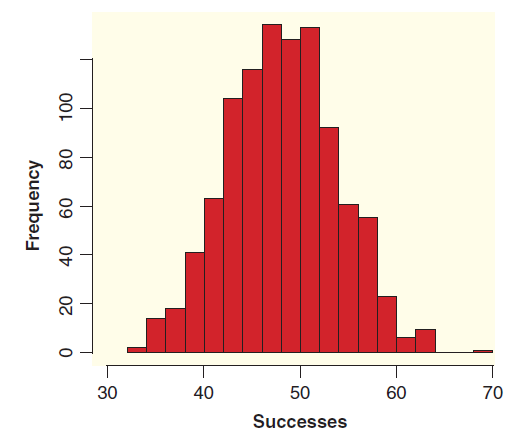Exercise B.22 discusses a study to see if smoking might be negatively related to a womans ability
Question:
Table B.6

(a) Is this a one- or two-tailed test?
(b) What are the null and alternative hypotheses?
(c) If the null hypothesis is true (and smoking has no effect on pregnancy rate), we expect the 678 women to have the same pregnancy success rate regardless of smoking habits. We might create a randomization distribution by simulating many random assignments of women to the two groups. How many women would you randomly assign to the smoking group? The nonsmoking group?
(d) Figure B.7 shows the counts for successful pregnancies in the smoking group from 1000 such simulations. Using the same statistic (count for successful pregnancies in the smoking group) from the original sample and using this figure, which value would best approximate the p-value for our test?

Figure B.7

Exercise B.22
Studies have concluded that smoking while pregnant can have negative consequences, but could smoking also negatively affect one€™s ability to become pregnant? A study collected data on 678 women who had gone off birth control with the intention of becoming pregnant. Smokers were defined as those who smoked at least one cigarette a day prior to pregnancy. We are interested in the pregnancy rate during the first cycle off birth control. The results are summarized in Table 2.11.

The word "distribution" has several meanings in the financial world, most of them pertaining to the payment of assets from a fund, account, or individual security to an investor or beneficiary. Retirement account distributions are among the most...
Step by Step Answer:

Statistics Unlocking The Power Of Data
ISBN: 9780470601877
1st Edition
Authors: Robin H. Lock, Patti Frazer Lock, Kari Lock Morgan, Eric F. Lock, Dennis F. Lock





